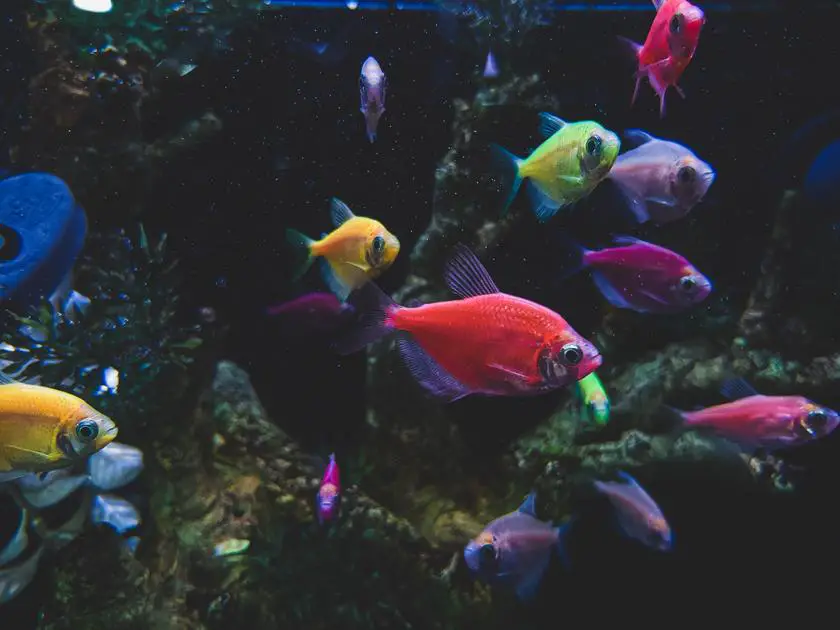Do you worry about the tannins released by Mopani wood affecting your aquarium fish? This detailed article delves into the effects of tannins on your fish, the benefits of incorporating mopani wood into your aquatic environment, and how to properly prepare the wood for safe use.
Are the tannins detrimental to your aquarium fish? In a nutshell, no. While tannins have their pros and cons, they aren’t inherently harmful to most species of fish. In fact, they can provide some benefits, which we will explore later on.
Curious to learn more? Let’s dive deeper into the world of tannins and mopani wood, and discover how your aquatic pets can benefit from their natural influence.
What are Tannins?
Tannins are naturally occurring compounds found in various types of wood, leaves, and plant materials. When submerged in water, these compounds leach into the environment, causing yellow to brown discoloration and lower pH levels. This phenomenon is commonly known as “blackwater.”
Benefits of Tannins
- Mimic Natural Habitat: Tannins create a more authentic, natural environment that closely resembles the native habitats of many tropical fish species, like bettas and discus.
- Anti-bacterial and Anti-fungal Properties: Tannins in the water help protect fish from pathogens, reducing the chances of infection.
- Stress Relief: The subdued lighting created by the tinted water is known to calm many fish species, improving their overall well-being.
Potential Drawbacks
- Lowered pH Levels: Tannins lower the pH levels in the water, which may affect certain fish and plant species that require neutral to alkaline conditions.
- Water Discoloration: Tannins can discolor the water, resulting in a less aesthetically pleasing environment for some aquarists.
Preparing Mopani Wood for Your Aquarium
Removing Tannins
While tannins are not usually harmful, you may want to minimize their release into your aquarium. Here’s how to do it:
- Boil the wood for at least 1-2 hours.
- Soak the wood in a separate container with water for a few days to a few weeks, changing the water daily.
- Use activated carbon or a commercial tannin remover to remove tannins from the aquarium water.
Sinking the Wood and Preventing Mold
- Boil the wood to release trapped air and help it sink more easily.
- Attach it to a heavy piece of slate or rock with silicone or another safe adhesive.
- Regularly check and clean the wood to prevent mold and algae growth.
Mopani Wood FAQs
- Do all fish species benefit from tannins?
No, not all fish species benefit from tannins. Fish species that prefer alkaline conditions may be adversely affected by the lowered pH caused by tannins. Always research the specific requirements of the fish species in your aquarium. - Can I use mopani wood in a planted aquarium?
Yes, you can use mopani wood in a planted aquarium, but be aware that the reduced light from the tannins may affect some plants. Also, consider the lowered pH and subsequent impact on plant growth.
- How much mopani wood should I add to my aquarium?
There’s no strict rule for adding mopani wood to your aquarium. However, start with a smaller piece and observe its effects on the water parameters and the behavior of your fish. Add or remove wood as desired to achieve the desired aquarium conditions.
- Will my aquarium water remain tinted after adding mopani wood?
Over time, the degree of tint from tannins will gradually lessen. Adding activated carbon to your filter or regularly doing water changes with tannin-free water will help clear up the water.
- How often should I clean the mopani wood in my aquarium?
Inspect mopani wood every few weeks, especially during the initial settling period. If you notice mold, algae, or dirt accumulating, clean the wood gently with a soft brush or cloth.
In conclusion, tannins released by mopani wood are not harmful to most aquarium fish, and in many cases, they can be beneficial. By understanding the effects of tannins on your specific fish and plant species, and by properly preparing mopani wood, you can enhance your aquarium’s authenticity and create a more natural environment for your aquatic pets to thrive.

